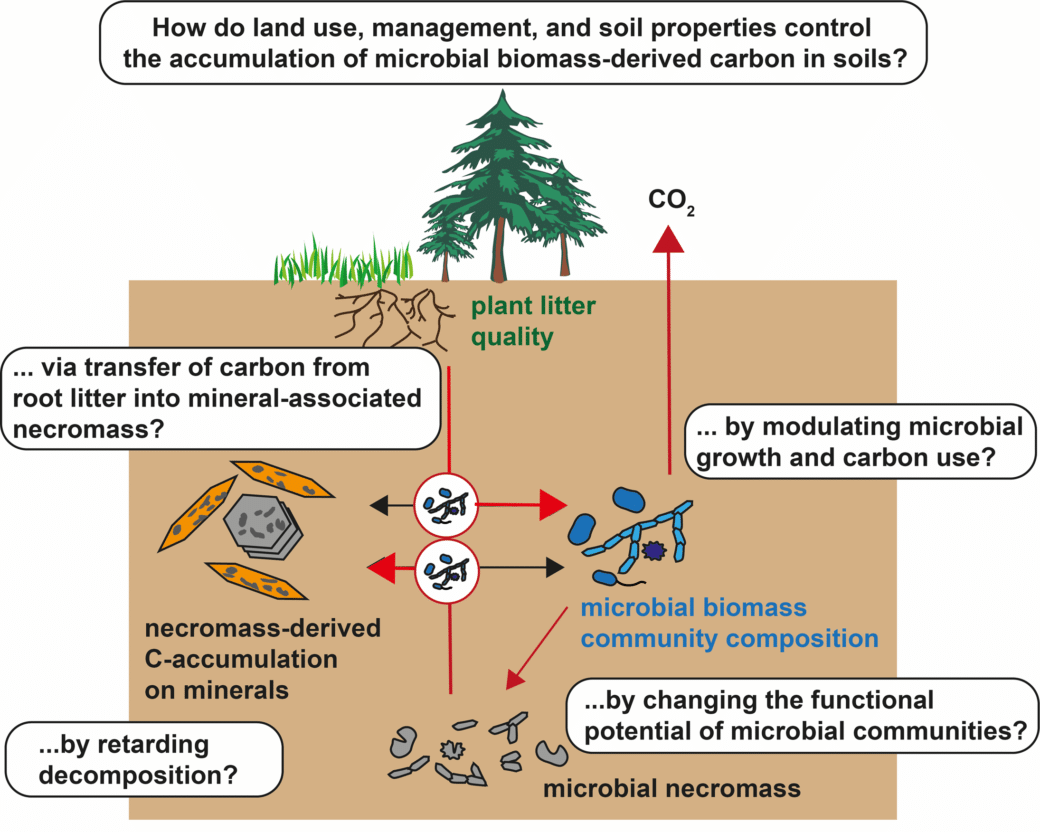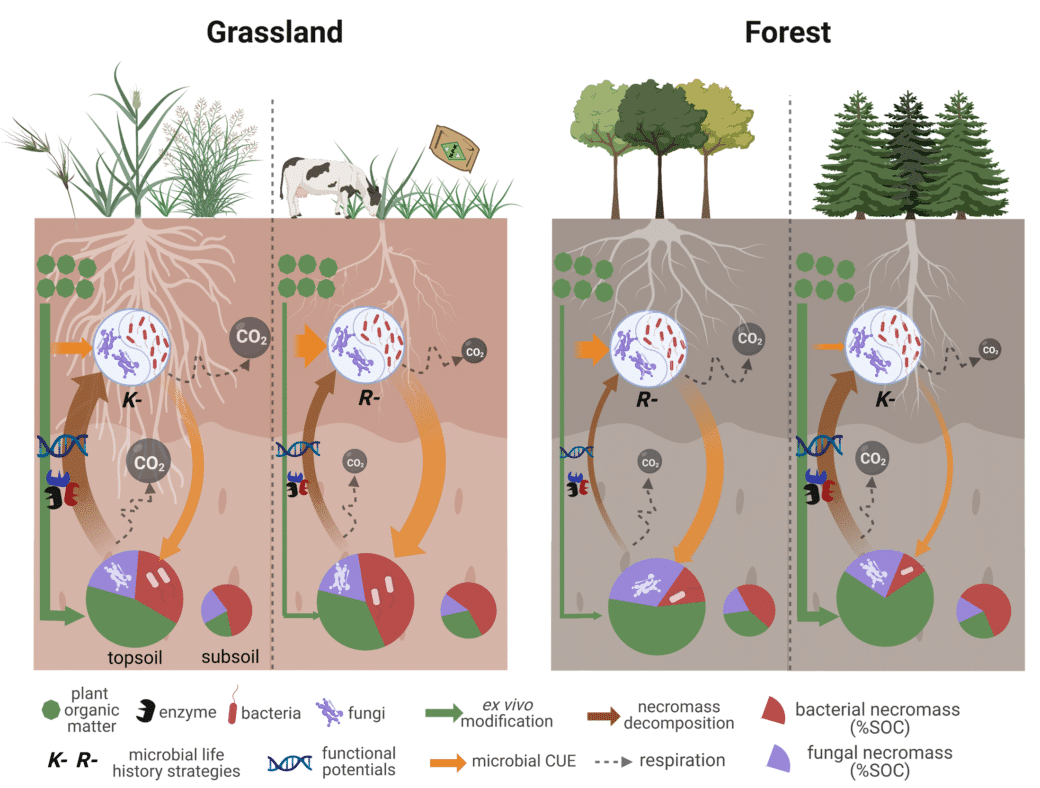Land use and biodiversity determine the contribution of microbial necromass to soil carbon storage
Microbial carbon assimilation and subsequent necromass build-up is expected to greatly contribute to soil organic carbon, though more in grasslands than in forests. The factors regulating the formation, accumulation, and stabilization of microbial necromass in soil are so far not well understood. By studying these concepts within the Biodiversity Exploratories framework, we can gain a comprehensive understanding of how land use and changes in plant and microbial community composition impact the potential pathways of soil necromass formation, transformation, and stabilization.
BioNeCS aims to understand how land use intensity gradients affect formation, decomposition, and stabilization of microbial necromass-derived soil organic matter by impacting the microbial community composition and its associated physiological properties.
The project further aims at understanding, how microbial necromass stabilization in soils is modified by soil type and depth.
BioNeCS will study the response of soil microbial necromass build-up along land use intensity gradients on the experimental plots (EP) of the Exploratories, and results will provide valuable information for reproducing the formation of mineral-associated organic carbon from microbial necromass in soil process models.
We hypothesize that accumulation and persistence of microbial necromass in soil depend on the transfer efficiency of plant litter carbon into microbial necromass carbon and its subsequent stabilization on minerals. This is due to the interplay of the composition and functioning of microbial communities and the soil’s binding capacity.
Land use, management and abiotic soil properties are expected to influence:
- Portion and origin of microbial necromass contribution to SOC
- Microbial community composition
- Growth and carbon use efficiency of microbial communities
- Microbial potential and need to decompose different organic substrates
- Root, fungal and bacterial necromass mineralization and stabilization
We will analyze the contribution of bacterial and fungal residues to SOM using amino sugars and muramic acid as molecular markers in topsoils and subsoils along land use gradients. As the contribution of necromass to SOM is the result of the interplay of necromass formation, degradation, and stabilization, we will study all components and how they are affected by management intensity.
To assess necromass formation, we determine biomass, composition, and physiological properties of microbial communities and their drivers. Additionally, differences in necromass longevity along land use gradients will be assessed and linked to shifts in the functional potential of the microbial community and abiotic soil properties.
Finally, we trace the transfer of C from root litter via necromass to minerals. Results of individual processes driving necromass formation and stabilization in soils will then be related to observed patterns of microbial residue contributions to SOM, to understand their long-term impacts on patterns observed in the field.











